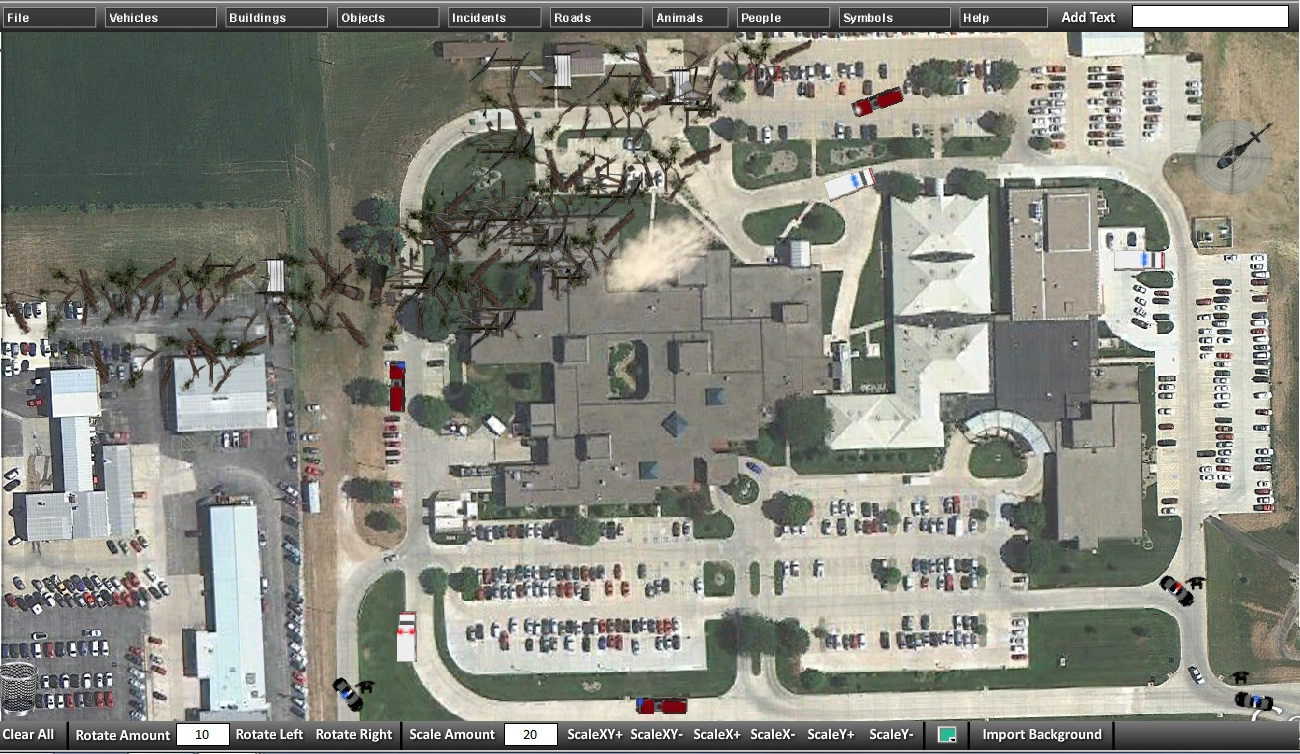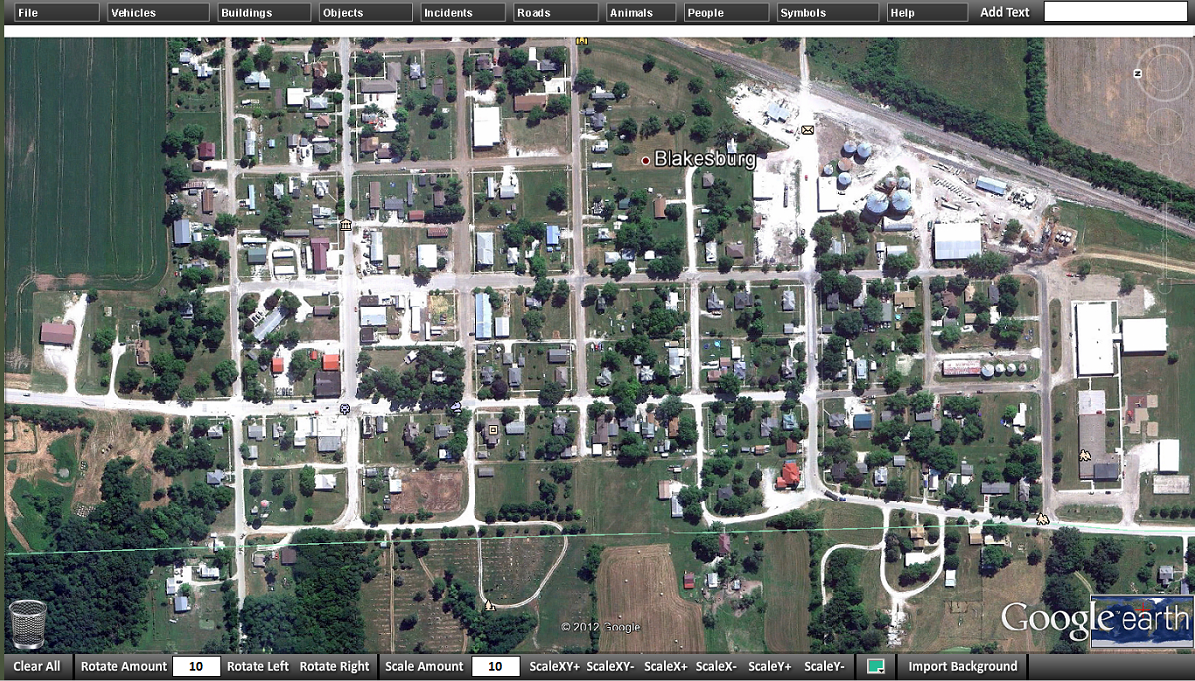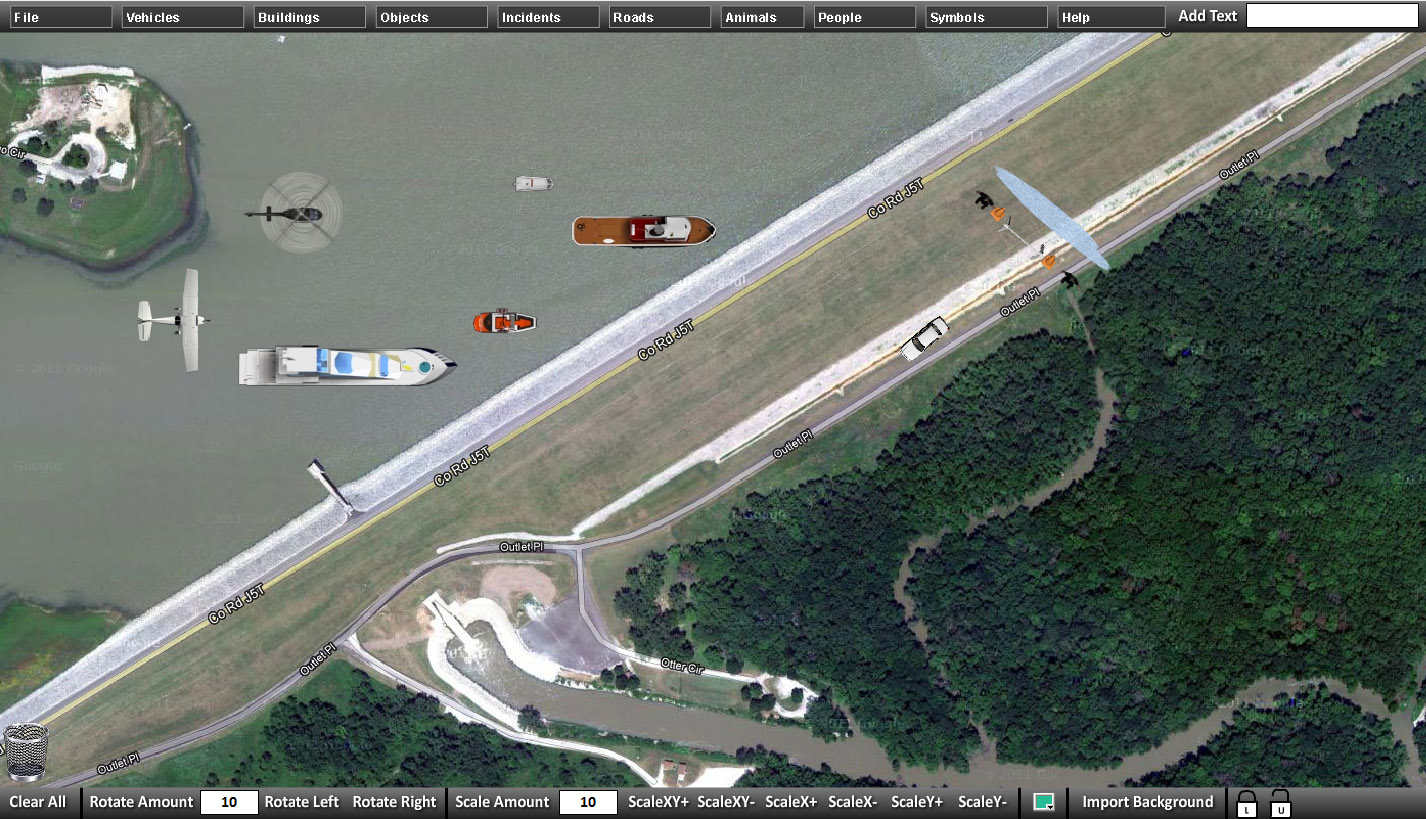Ft. Madison, IA: Windshear Damage
A needs assessment may reveal a wide array of concerns. Clearly you can’t design an exercise that effectively practices:
- All functions. . .
- In the context of all hazards. . .
- Using all agencies, organizations, or departments. . .
- In all exercise formats. . .
- Employing all resources.
You will need to set priorities and make choices. It is important that the scope be clearly and narrowly defined.
There are five key elements of scope: type of emergency, location, functions, participants, and exercise type. The decisions you make for each of these elements define your scope.
Type of Emergency
An exercise is usually limited to one major event, although other secondary events might develop as the scenario unfolds. Hazards may be chosen for several reasons, including:
- The emergencies that will generate the types of actions that need to be practiced.
- The highest priority hazards that the organization faces.
- The hazards that haven’t been exercised recently.
- Problems that have just recently developed.
Location
Identify the location (a specific address) where the simulated event will occur. For tabletop exercises, select a place where the participant’s response could realistically occur, such as in the EOC.
Functions
List the operations that the participants will practice. Be sure that the procedures within a certain function are clear and narrowly defined. For example, to exercise a community’s alert warning system, the following actions might be specified:
Exercise Alert Warning System
- Notify the warning agency.
- Turn on sirens.
- Notify fire or police to use loud speakers in area.
- Notify Emergency Alert System (EAS) to interrupt programming with message.
Participants
After the most important functions or needs have been identified, you can narrow the list of participating organizations and individuals to those that are required to carry out the actions.
Ask yourself: Which organizations need to be involved to carry out the function(s) being tested? Which representatives from the identified organizations should be there?
For example, for a tabletop exercise in an EOC or other operations center, you would typically want policy makers, coordinators, and operations personnel. On the other hand, for a tabletop in an Incident Command Post, you would most likely want personnel who are knowledgeable in field operations and have some on-scene decision-making authority.








 The Virtual Table Top – VTT™ is a web-based tool for conducting enhanced table top exercises. Facilitators and users can import custom background images, place terrain features, roads, hazards, and equipment on a 3D street grid to visualize the scenario and response actions.
The Virtual Table Top – VTT™ is a web-based tool for conducting enhanced table top exercises. Facilitators and users can import custom background images, place terrain features, roads, hazards, and equipment on a 3D street grid to visualize the scenario and response actions.